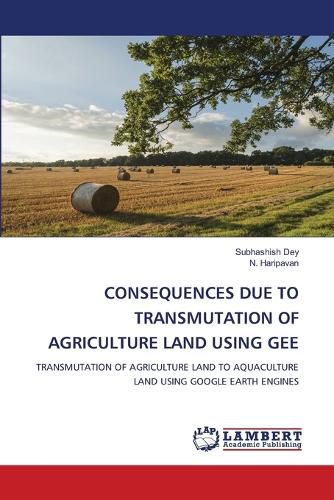Readings Newsletter
Become a Readings Member to make your shopping experience even easier.
Sign in or sign up for free!
You’re not far away from qualifying for FREE standard shipping within Australia
You’ve qualified for FREE standard shipping within Australia
The cart is loading…






This title is printed to order. This book may have been self-published. If so, we cannot guarantee the quality of the content. In the main most books will have gone through the editing process however some may not. We therefore suggest that you be aware of this before ordering this book. If in doubt check either the author or publisher’s details as we are unable to accept any returns unless they are faulty. Please contact us if you have any questions.
The transmutation of agricultural land to aquaculture represents a significant shift in land use patterns with far-reaching ecological consequences. Using advanced geospatial tools such as Google Earth Engine (GEE), this study delves into the multifaceted impacts of this transition on terrestrial and aquatic ecosystems. Through a comprehensive analysis of satellite imagery, land cover classification, and spatial modeling techniques, we explore the alterations in land surface characteristics, water quality dynamics, and habitat fragmentation resulting from agriculture-to-aquaculture.The study focuses on several key ecological parameters, including land surface temperature, vegetation indices, water quality indicators, and landscape connectivity. By leveraging the vast archive of satellite data available through GEE, we track changes in these parameters over time and across spatial scales to elucidate the ecological consequences of land use transformation.Our findings reveal significant shifts in land surface temperature following the conversion of agricultural land to aquaculture.
$9.00 standard shipping within Australia
FREE standard shipping within Australia for orders over $100.00
Express & International shipping calculated at checkout
This title is printed to order. This book may have been self-published. If so, we cannot guarantee the quality of the content. In the main most books will have gone through the editing process however some may not. We therefore suggest that you be aware of this before ordering this book. If in doubt check either the author or publisher’s details as we are unable to accept any returns unless they are faulty. Please contact us if you have any questions.
The transmutation of agricultural land to aquaculture represents a significant shift in land use patterns with far-reaching ecological consequences. Using advanced geospatial tools such as Google Earth Engine (GEE), this study delves into the multifaceted impacts of this transition on terrestrial and aquatic ecosystems. Through a comprehensive analysis of satellite imagery, land cover classification, and spatial modeling techniques, we explore the alterations in land surface characteristics, water quality dynamics, and habitat fragmentation resulting from agriculture-to-aquaculture.The study focuses on several key ecological parameters, including land surface temperature, vegetation indices, water quality indicators, and landscape connectivity. By leveraging the vast archive of satellite data available through GEE, we track changes in these parameters over time and across spatial scales to elucidate the ecological consequences of land use transformation.Our findings reveal significant shifts in land surface temperature following the conversion of agricultural land to aquaculture.